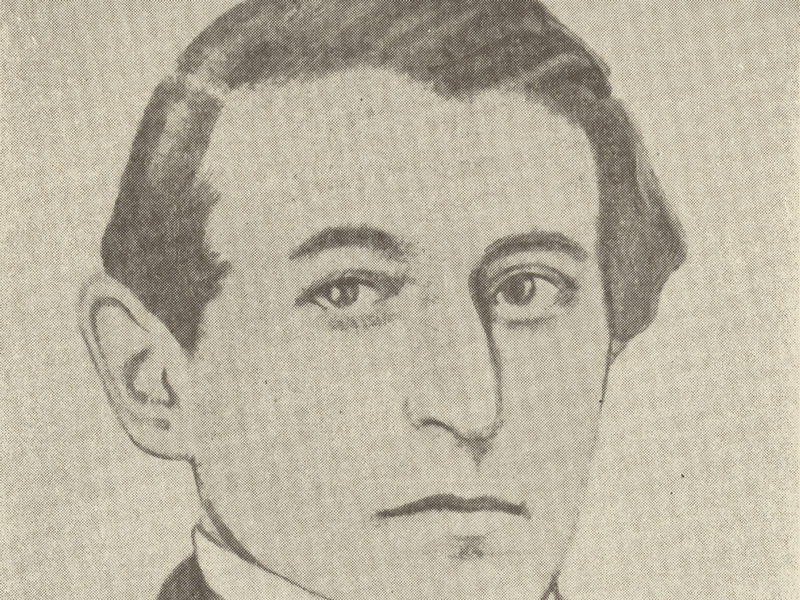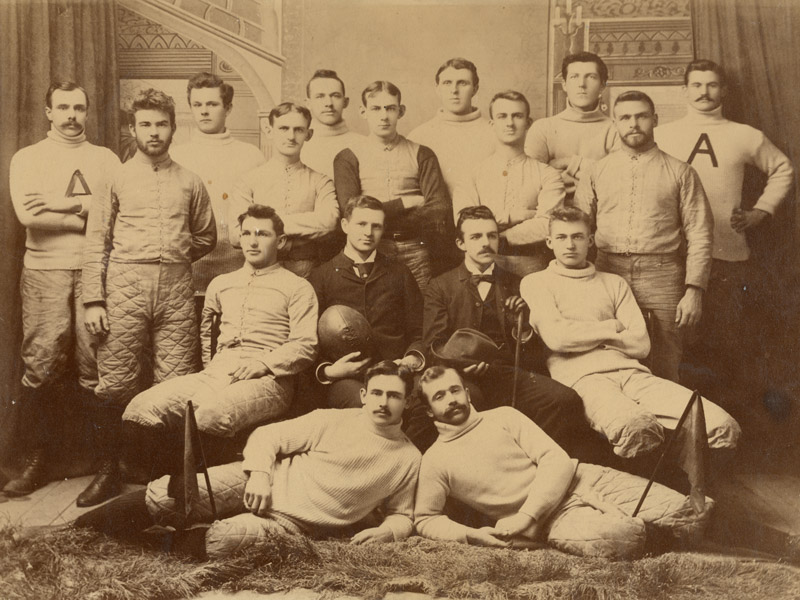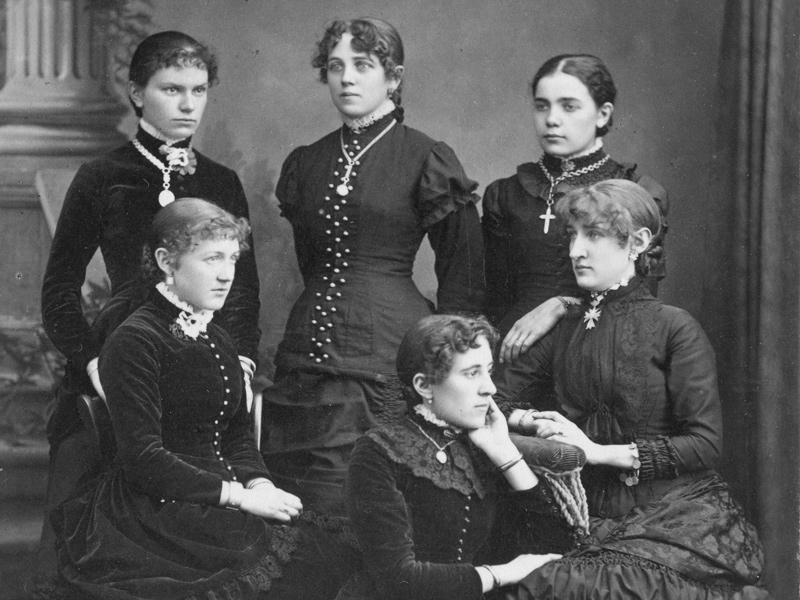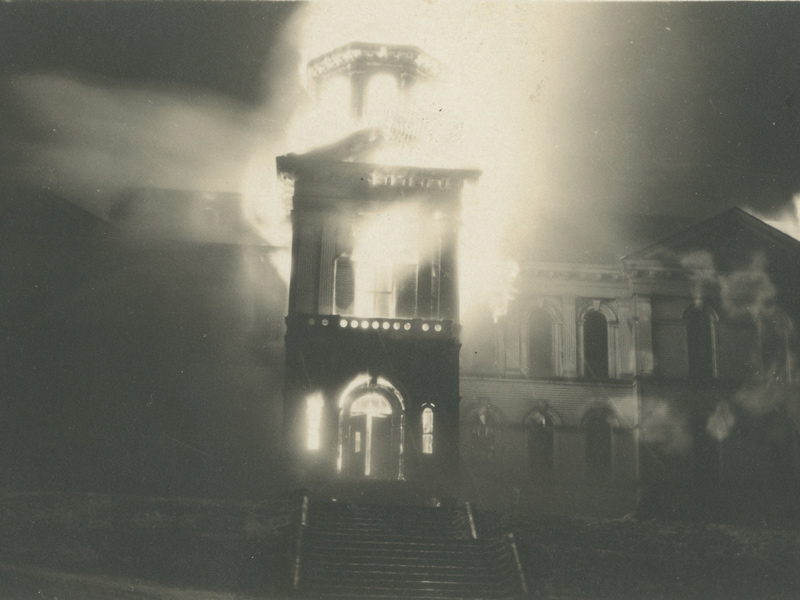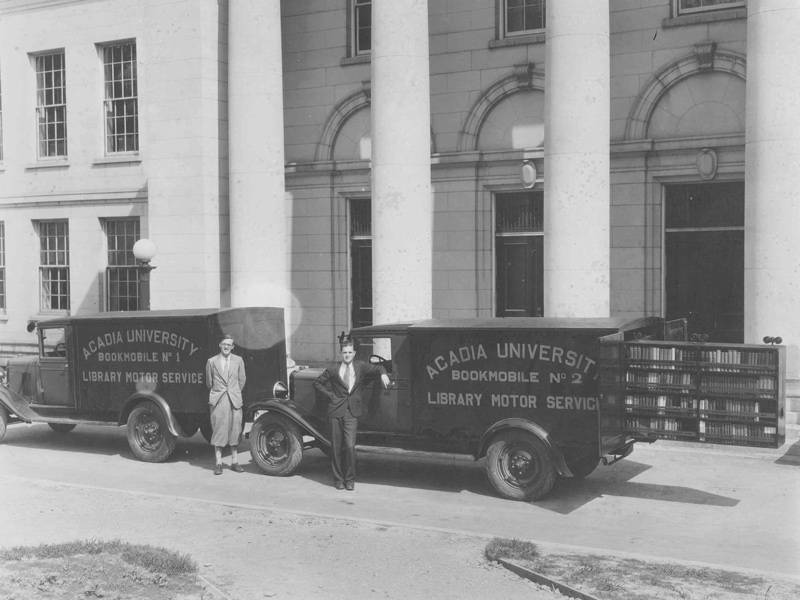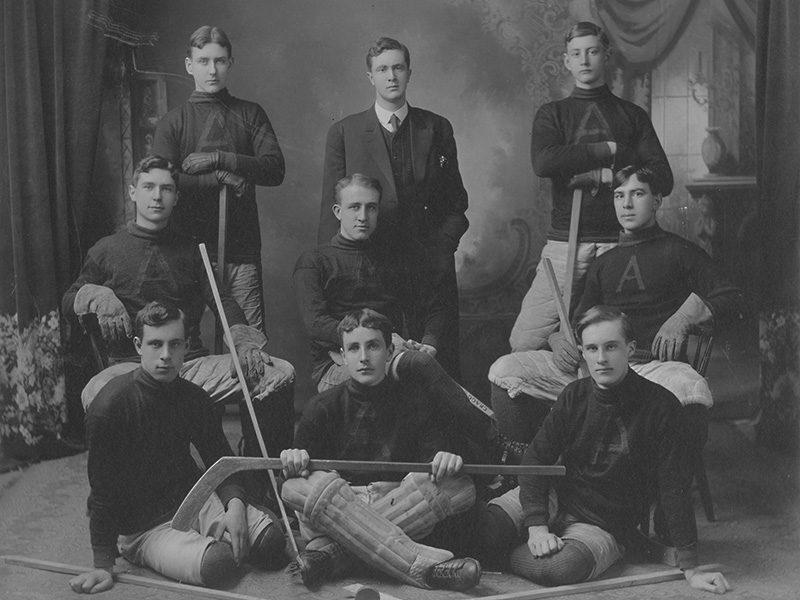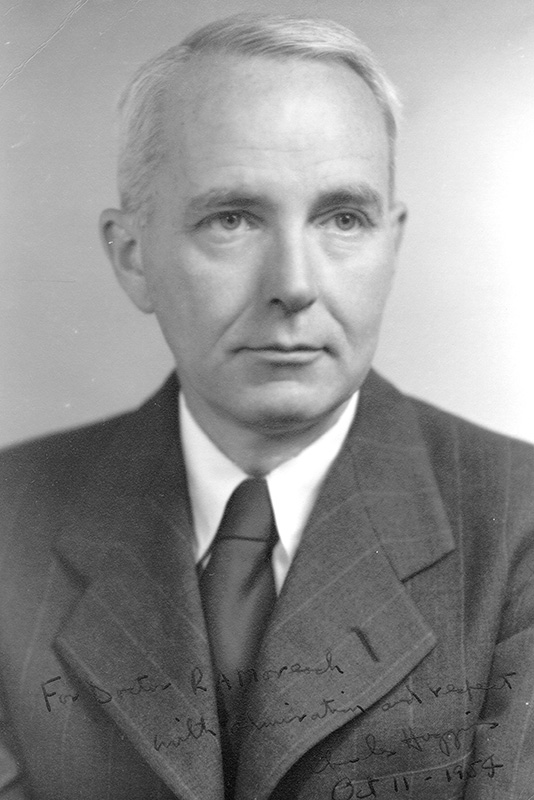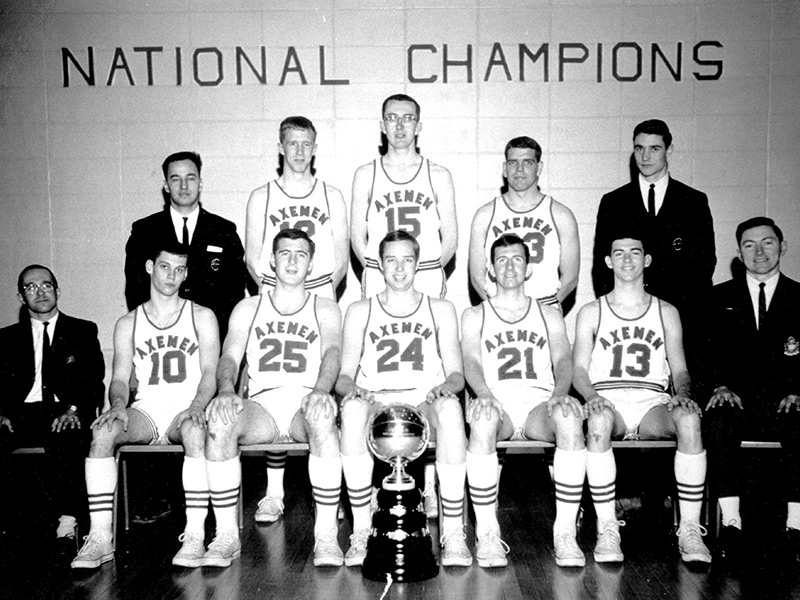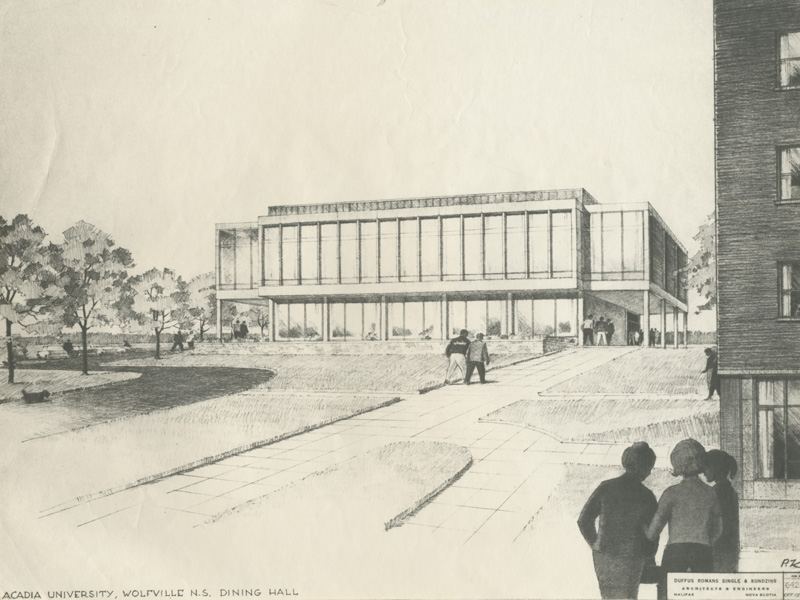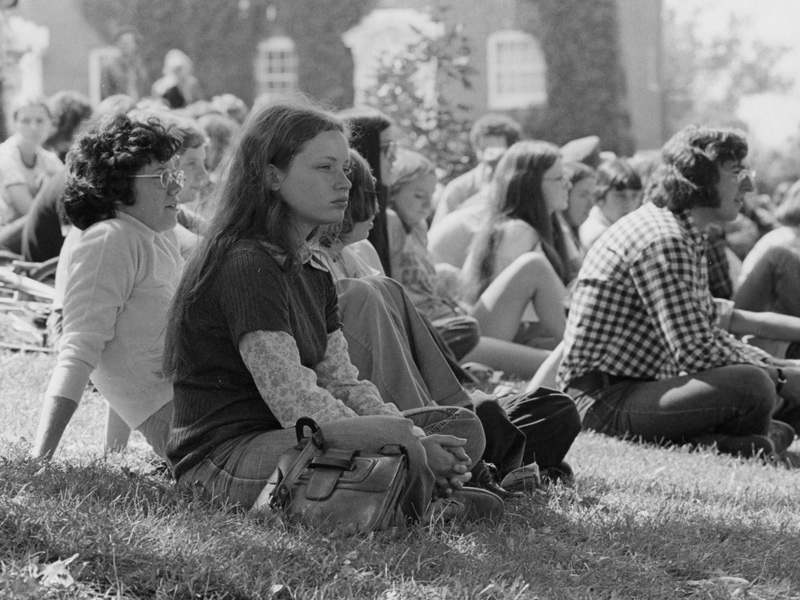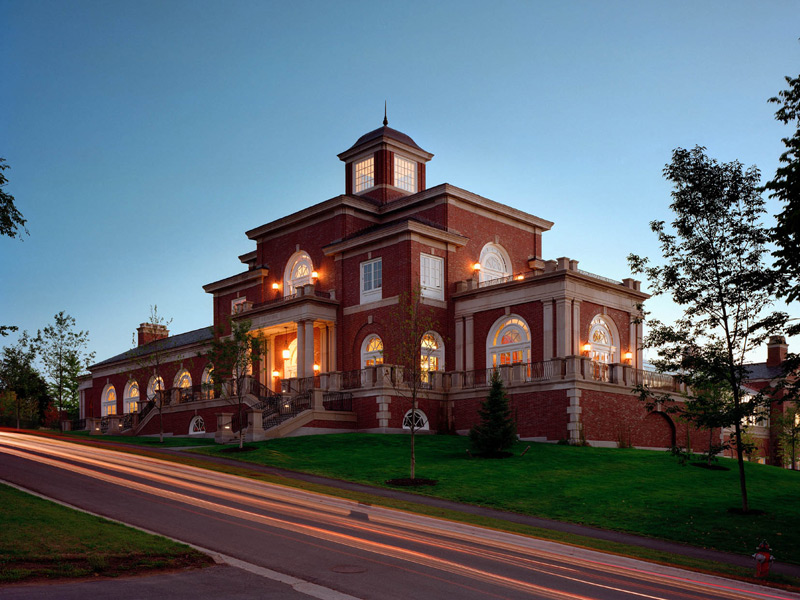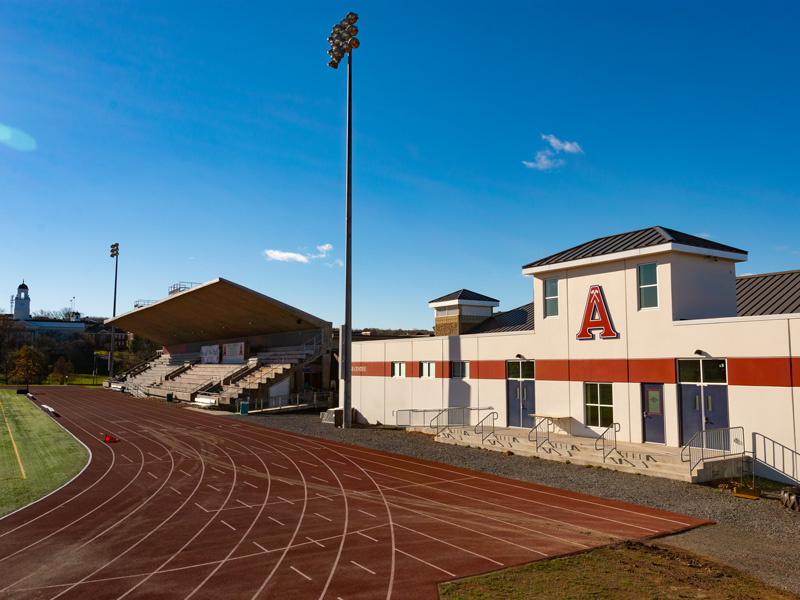
1838 - 1900
The Beginning

Acadia was founded in 1838 by local Baptists who wanted to create a university that would serve the region without requiring religious tests from faculty or students.
Disaster struck more than once in those early years. Professor Isaac Chipman, a driving force of the University, and four of his students drowned while on a geological expedition, and Acadia’s College Hall was one of many early buildings lost to fire. However, the campus community persevered.
Many key organizations bloomed early in Acadia’s history. The alumni association was founded in 1859, followed by The Athenaeum student newspaper in 1874 and the first student council in the 1880’s.
While it would take many years for the University to become truly diverse, the final years of the 1800’s featured several trailblazing graduates. In 1884, Clara Belle Marshall became the University’s first female graduate. Beginning in 1893, every graduating class would include at least one woman. Student-athlete Edwin Borden graduated in 1892 at a time when Black men were rarely allowed entrance to universities in the British Commonwealth.

1900 - 1950
Brick by Brick

The familiar features of today’s campus began to take shape in the 1900s with the construction of stout brick buildings including Rhodes Hall, the Science Building (Patterson Hall), and the Dining Hall (Fountain Learning Commons). After the second College Hall burnt down on the anniversary of the first hall’s destruction, the now-iconic University Hall was completed in 1925.
Many familiar names that you’ll see on buildings, rooms, and roads on campus trace back to students and faculty of this era. However, their achievements were not without loss. Many students bravely served in the World Wars, with War Memorial House, the War Memorial Gymnasium, and its cenotaph dedicated in their honour. Nearly 700 students and alumni are thought to have served in the First World War alone, a disproportionate number at a time when only a few hundred students were enrolled; nearly one in ten were killed. At least 700 more are known to have served in the Second World War, with more than 40 lost.

The Great Depression and the World Wars led to rapid contractions and expansions in enrolment that challenged the University. By mid-century, around 500 students were enrolled and taught by several dozen faculty members. The students were also learning very different subjects. The introduction of the Bachelor of Science degree in 1903 and Bachelor of Education degree in 1935 marked major shifts toward science and professional studies and away from classical education in Greek and Latin.



1950 - 1990
Modernizing and Maturing



The post-war boom years led to growth and social change across the country, including Acadia. Students pressed the University to give them more of a voice in campus life and the governance of the institution, while new legislation reduced the role of the United Baptist Convention of the Maritime Provinces in Acadia’s leadership and created the Acadia Divinity College. The 1970’s also saw the creation of the faculty union, one of the first in Canada.
New co-ed residences were built to support the growing and increasingly diverse student body. Major campus expansions happened at a dizzying speed. For example, in 1965 alone, Wheelock Dining Hall, the Vaughan Memorial Library, and Eaton House all opened.

Huggins Science Hall opened in 1970. The building’s namesake, Dr. Charles B. Huggins, became Acadia’s first Nobel laureate in 1966 when he was awarded the Nobel Prize for his pioneering cancer research.
Meanwhile, interest in science and professional studies continued to grow, including the introduction of the Bachelor of Commerce (later Business Administration) degree in 1962.


1990 - 2010
The Acadia Advantage

As the digital era began, Acadia was a mature institution that was increasingly recognized as a powerhouse in the Maclean’s university rankings and an overachiever in varsity athletics.
In 1996, when most students didn’t have computers or internet access at home and long before wifi and virtual classrooms, Acadia introduced the Acadia Advantage program. Every student was issued a laptop computer, high-speed internet was introduced throughout campus, and electronic learning tools were integrated into the curriculum, an achievement recognized by the Smithsonian Institution. After over a decade, the program was phased out as laptops became commonplace. Acadia had successfully created a technology-rich learning environment more quickly and thoroughly than many larger institutions.


Residences were refurbished and expanded, and the KC Irving Environmental Science Centre and Harriet Irving Botanical Gardens, in many ways the showpiece of campus, was built. This sparked an ongoing push for sustainability that included the construction of the Biology Building (designed for LEED Gold Standard) and the launch of the Acadia Community Farm in 2008.

2010 - Present
Steps forward

Despite the shocks and challenges of the 2008 economic crisis and the COVID-19 pandemic, Acadia continues to grow and evolve.
Sustainability and the environment became a bigger focus inside and outside the classroom. The University committed to applicable UN Sustainable Development Goals and is working toward carbon neutrality, ideally by 2030. Infrastructure updates included the first major solar array on campus and our first electric vehicle fast charger. A continued shift to more sustainable, locally sourced food helped lead to Acadia's Fair Trade Campus certification, and in 2022 we became the first institution in Canada to receive the Organic Campus designation.

The importance of inclusivity and accessibility has also led us to increase our engagement with local communities.
Our steps on the path of reconciliation have included reaching a historic agreement with Glooscap First Nation in 2020 and new efforts to indigenize campus and support young Indigenous scholars. We have also sought to better connect with Nova Scotia’s historic Black community with the addition of dedicated support staff and our commitment to the Scarborough Charter.
This work, as well as efforts to improve accessibility to those with disabilities and to better support 2SLGBTQ+ students, will continue to strengthen the campus community in the years to come.
Special Thanks
Special thanks to Catherine Fancy and Wendy Robicheau at Acadia’s Esther Clark Wright Archives, and to Professor Emeritus Barry Moody for his previous works.




